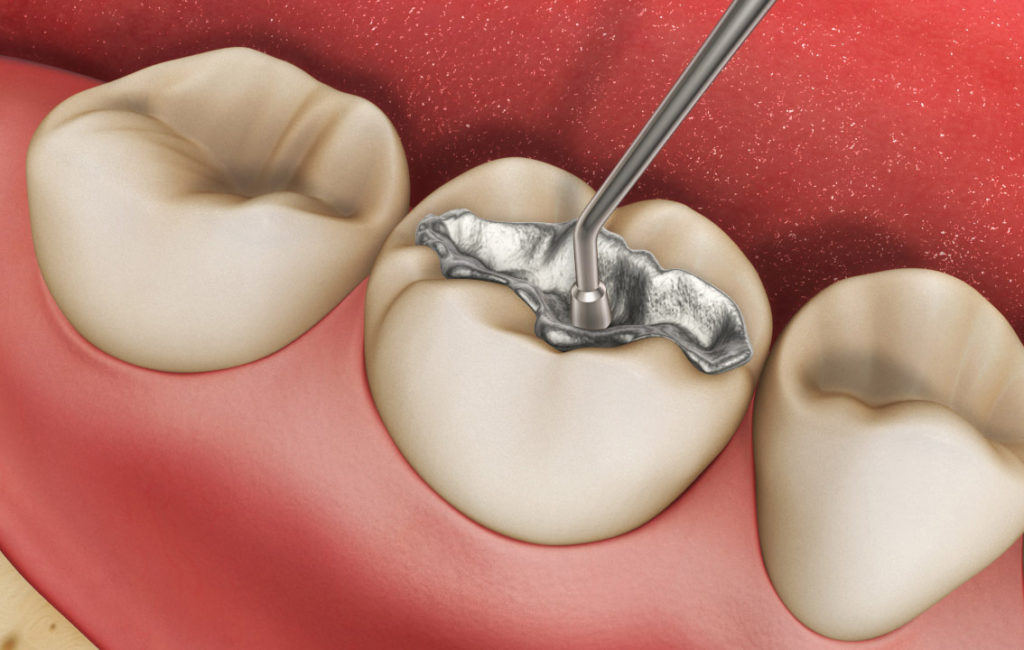
Poor aesthetics, a taste of metal in the mouth, the age-old question of the dentist “Would you like to replace the amalgam filling?”… Should patients who had a metal alloy filling installed several decades ago be worried? Such fillings are remembered by many patients over 30 years old.
They were actively put at school, talking about the merits of the silver included in the amalgam filling. Times have changed, dentistry has stepped far forward, and today advanced European clinics are less and less likely to offer metal fillings to their patients. And there are good reasons for that. The so-called “amalgam” is the strongest and most inexpensive filling material, designed for a long service life. But the composition of such a seal, in addition to silver, which has truly unique antiseptic properties, also includes mercury, tin and copper. And every patient knows about the degree of harmful effects of mercury on the body.
Mercury can accumulate in the body, lingering in the liver, brain and kidneys. This causes poisoning of the whole organism, and for patients with low immunity it is doubly dangerous. In addition, mercury emits fumes when interacting with chewing gum and some foods, especially acidic ones (tomato juice, citrus fruits).
Mercury has a high degree of thermal conductivity. When eating hot food and drinks, mercury “expands”, that is, the volume of the filling increases slightly and puts pressure on the walls of the tooth. On the contrary, when eating cold food, the volume of the filling “shrinks”, which leads to the appearance of a microscopic gap between the filling and the tooth, which becomes a habitat for pathogens, from which no one, even the most thorough home cleaning of teeth, can save. Now imagine: how many times a day do you alternate between drinking hot tea and cold water? So many times your filling “transforms”, affecting the soft tissues of the tooth. It is the high thermal conductivity of mercury that often causes overheating of the pulp (the neurovascular bundle of the tooth), which leads to pulpitis and the need to remove the nerve.
Evidence of the current inflammatory process are brown spots around the metal filling.
Among the alarming signs that speak of an increased level of mercury in the body are increased fatigue, weakness, a grayish tint of the skin, and sublingual vessels of a dark blue color.
A large number of metal fillings contribute to the formation of so-called microcurrents, manifested by a burning sensation or a sour taste in the mouth. Of course, this has a negative impact on the health of surrounding tissues.
If you have several metal fillings installed more than 10 years ago, we strongly recommend that you seek advice from specialists. Don’t wait for the above symptoms to appear. The cause of the malaise may be hiding in a seemingly harmless filling. The amalgam replacement process is a quick, painless and inexpensive procedure that will keep you healthy for years to come.
